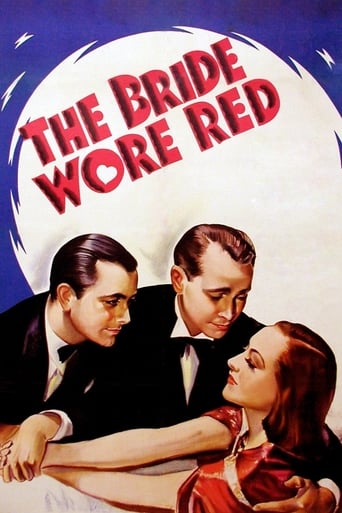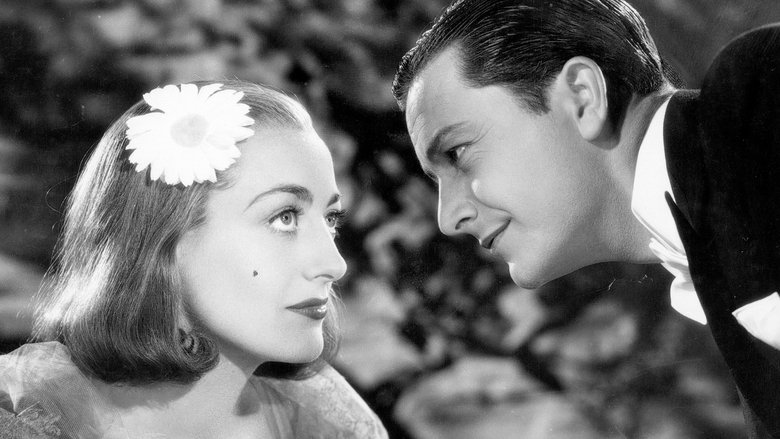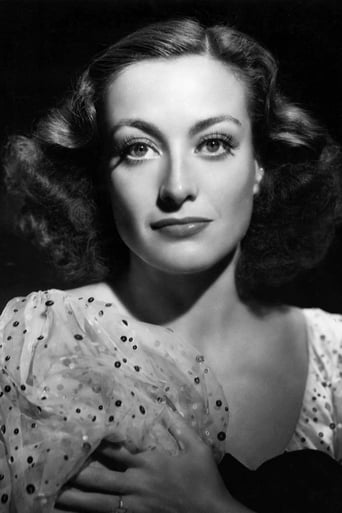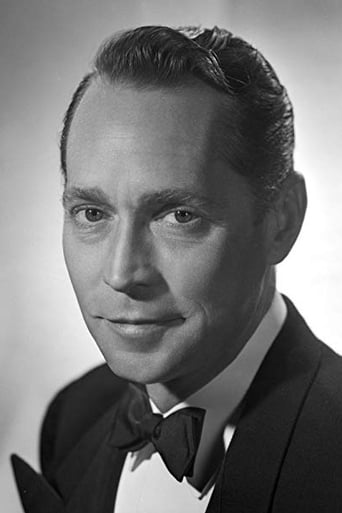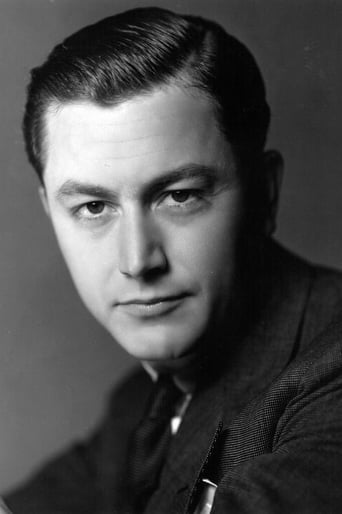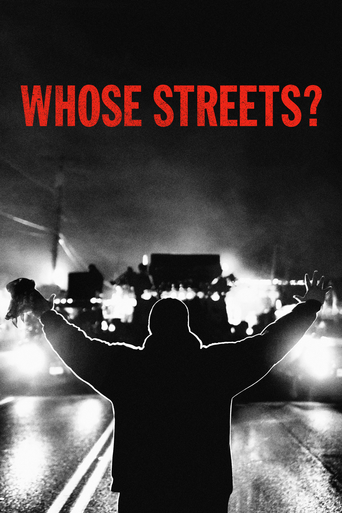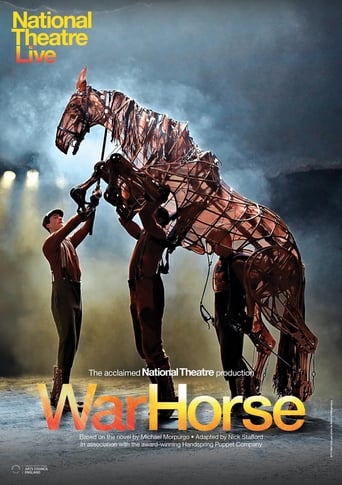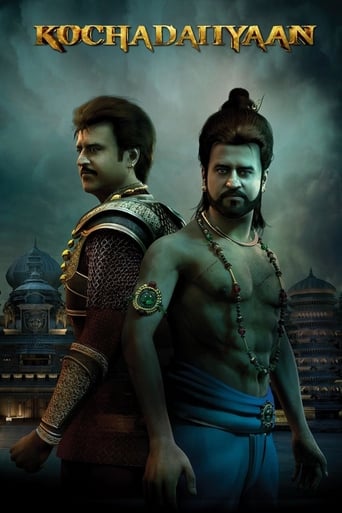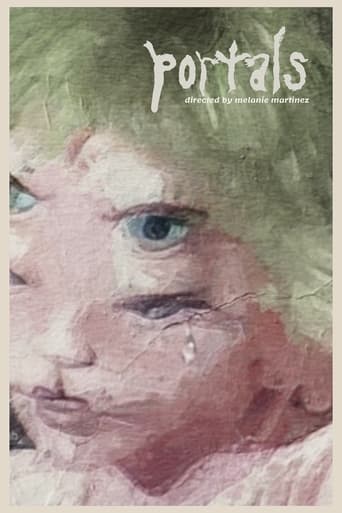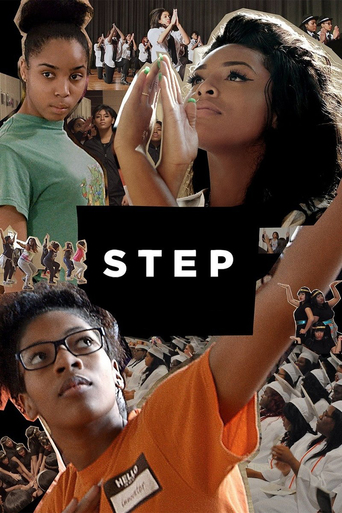The Bride Wore Red (1937)
A poor singer in a bar masquerades as a rich society woman thanks to a rich benefactor.
Watch Trailer
Cast


Similar titles
Reviews
Overrated
Great movie! If you want to be entertained and have a few good laughs, see this movie. The music is also very good,
At first rather annoying in its heavy emphasis on reenactments, this movie ultimately proves fascinating, simply because the complicated, highly dramatic tale it tells still almost defies belief.
The acting in this movie is really good.
Years ago, I had the pleasure of seeing this on the big screen at the Museum of Art in Los Angeles in a double-bill with "Jezebel". No, it wasn't a "Joan vs. Bette" festival, but a "the lady wore red" series, and in the case of these two films, the red was not captured because of black and white photography. While "Jezebel" is of course an all-time classic, "The Bride Wore Red" was considered at the time a box office disappointment in a period of Joan Crawford's career where repeat themes of films she'd already done lead her to be named on the list of "box office poison".To see "The Bride Wore Red" today is to show what MGM stood for in its heyday: beautiful stars, glamorous clothes and exotic settings. In "The Bride Wore Red", she's a cabaret singer down on her luck who is given the good fortune by one of her customers (George Zucco) who, like Henry Higgins, thinks he can turn this sow's ear into a silk purse. Before you know it, she's heading to an exclusive hideaway for the wealthy in the Alps, and has gotten the attention of wealthy Robert Young, as well as local postman Franchot Tone. Young is already engaged to Lynne Carver, however, but Crawford is determined to bust that up. All seems to be going well until she puts on the garish red dress she's been saving up for the right occasion, something which shows her for who she really is.Red, in high society, was apparently not a proper color for a nice young lady to wear, and indeed, the dress designed for Crawford is truly audacious and tacky. Everything else she wears, however, present her as more lady-like and of noble blood than she really is. Young's companions, Billie Burke (as a snooty contessa) and Reginald Owen (as Carver's father), can tell something's off with this seemingly "perfect" miss, and at a local social event (with practically every man in liederhosen), Crawford shows the truth of who she really is, down to earth and not at all uppity like the class she's trying to worm her way into. Glamorous with a capital "G", "The Bride Wore Red" is one of the most entertaining of Joan's MGM films, even if at times, it is a bit like the top of an overly stuffed wedding cake. Director Dorothy Arzner went out of her way to make this as beautiful as possible, and for some audiences (particularly the critics) it must have been a little too much, having been overstuffed with recently released glossy MGM films like "Maytime" and "Rosalie" where at least the lovers got to sing rather than argue before the love scene arrived.
I've never been a fan of Joan Crawford, so it's always a surprise to find a performance of hers that really wins me over. I liked her in Grand Hotel (as 'Flaemmchen,') and I liked her again, very much, as Anni, the cheap night-club singer masquerading as a lady. Often seen in hard and brittle roles, Crawford has a very different look in this film, and expresses a vulnerability that brings her character to life. (Billie Burke is also notable, in the small but juicy role of the acid-tongued Contessa. And Franchot Tone has never been more likable.)The Bride Wore Red is certainly built according to studio formula, but it also embodies all the earnest craftsmanship that characterized the studio system. The film at times seems clichéd, but it fully redeems itself through genuine empathy for the characters. And through its very strong premise: a 'scarlet' woman driven by hunger for the good life, who is given a slim chance of joining the upper class - provided she's cold and deceitful enough.Until the final act, I really felt that the film could have gone either way: warm-hearted romance or bitter tragedy. The delicate balancing act makes it hard to achieve a satisfying pay-off. But the ending does succeed, thanks to a couple of nicely orchestrated scenes, and to the talent and charisma of Ms Crawford. These do make us believe that Anni could only choose as she does.I was a bit sorry the film didn't delve just a little deeper into the moral and social dimensions. Anni's real problem is not what she wants, but rather what she may have to give up in order to get it. That distinction is not made entirely clear, leaving the film a bit too reliant on the old cliché that 'wealth doesn't bring true happiness.' But there's more going on here. Anni's 'tragic flaw' is not the hunger itself, but her willingness to give up honesty, morality and even true love. This distinction becomes almost subliminal, but it's there, and gives the film a slightly sharper edge. Anni is a character we can identify with and possibly admire, even when she's doing something despicable.If you're in the mood for a traditional, old-style Hollywood entertainment, you won't go wrong with The Bride Wore Red. This is one of the good ones, a film I'd gladly watch again any time.
Beautifully filmed and decorated, "The Bride Wore Red" makes a very pleasant and entertaining Joan Crawford vehicle from MGM and director Dorothy Arzner. It was based on an unproduced drama from Austrian playwright Ferenc Molnár, and it is kind of a reworking of the fairytale of Cinderella. This adaptation has decidedly toned down Molnár's story, converting Crawford's main character from a prostitute to a singer employed in a sleazy cabaret.First and foremost, I'd like to note that Joan Crawford looks stunning in this movie, sporting a modified pageboy hairstyle, shoulder length and combed back without bangs and somewhat lighter in tone than usual. The style really exposes her aristocratic forehead to good advantage and frames her face perfectly. Her makeup is also certainly impeccable, and the beautiful costumes she wears suit her perfectly, and she can wear them like no other. Youthful, feminine and vivacious, Joan Crawford really lights up the screen in a manner very different from what today's viewer might expect.An opening sequence at a gambling casino establishes the fact that a bored and decadent Count (the verbose George Zucco) believes that class differences are irrelevant and that clothes and surroundings make the person, and callow socialite (Robert Young, in the second of his four outing with Crawford) favors the theory that "breeding is everything." On a whim, they patronize the sleaziest music hall in Trieste, and after Young's exit, the Count stays to watch the floor show, and works up a plan.Enter Joan Crawford as a nightclub singer who offers up a turgid ballad. The Count requests to meet the singer and he drunkenly asks to set her up with a full wardrobe for two weeks in a swanky Bavarian hotel, as part of a plan to personally prove to Young his theory that class doesn't matter. Since Crawford is struggling to put food on the table, she eagerly agrees to go along with Zucco's devious plan.A romantic dilemma unfolds, as Crawford meets two very different young men -- Robert Young as the wealthy but engaged socialite, and Franchot Tone as a poor, but fun-loving local postman. It falls upon the wise cracking Tone to escort Crawford in a mule wagon to the remote hotel where she is to stay, since his little cousin -- the adorable Dickie Moore -- failed to deliver her telegram to the hotel's concierge.After she is ensconced in a ritzy hotel suite, Crawford discovers, by one of those standard Hollywood coincidences, that the hotel maid assigned to her room is a former coworker of hers from the cabaret, who left that lifestyle after having a good hard look at herself and realizing that makeup would no longer cover the lines on her face. Played by Mary Phillips -- this character serves both as Crawford's conscience and subconscious, sometimes egging her on, and at other times, warning her off. The two seem to share a strong bond, although Crawford at times gets fairly angry with Phillips, and that leads to a few stand-offs that are quite entertaining.Complicating Crawford's stay at the hotel are socialites Billie Burke, Reginald Owen and stunning Lynne Carver, who plays Robert Young's charming fiancée. The amazing Billie Burke is actually "cast against type" here, and plays a shrewd and sharp-tongued Countessa, who has her doubts about Crawford's background and inquires into her past. Burke appears as a mother figure to Carver, and attempts to protect the relationship between Young and his fiancée, and is determined to sabotage the attraction that springs up between Crawford and Young.The movie effortlessly alternates scenes of Joan Crawford with either of her male costars in a brisk pace that keeps the proceedings lively. Both romances appear plausible, and some neatly clever foreshadowing is expertly inserted throughout. Watch for the countryside scene where Crawford playfully sticks her face into a mountain stream, and Young's reaction to the sight. It's a real highlight and director Arzner makes it both nicely subtle and affecting.And one more minor detail I'd like to point out regards how this movie, like other classic movies, deals with tying up all the loose ends of the plot. At the climax, after the Count's telegram had been delivered to the Countessa, Crawford's character makes her goodbyes to all the socialites. She bids farewell to Young, and then Reginald Owen, and then says to Billie Burke, her nemesis in the film, "Goodbye, Countessa. You're very smart, but please remember that I'm smart too." The Countessa remains unmoved by her remarks, and sits in silence. Crawford then moves on to Lynne Carver, and warmly tells her that she hopes that she'll be happy in the future. Crawford tells Carver that she admires and respects her, and Carver accepts her apology. Upon hearing this, Billie Burke, the Contessa's facial expression quickly softens and she smiles at Crawford, as if she has now forgiven her her transgressions, since Crawford had given Carver her due. It was such a nice touch, as if to imply that the Countess held no ill will towards Crawford, without a line of dialog being spoken.There's plenty of delightful little cameo appearances too, like Frank Puglia as a sympathetic head waiter with a secret, lovely Ann Rutherford as a jilted peasant girl and Charles Judels as the shifty proprietor of the disreputable cabaret. It's all filmed in the glossy Metro-Goldwyn-Mayer style, with attention paid to every detail of lighting, art direction and cinematography. The ending may perhaps be a little too easily resolved, but "The Bride Wore Red" still wears well today.
Crawford in this 1937 MGM "women's picture," plays a middle-class cabaret dancer who poses as a rich society girl as a prank to secretly snag a wealthy husband. What a plot!!! There are some beautiful settings (obviously fake) and the black-and-white photography could never be better.

